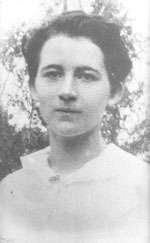The Owl House

The Owl House is a museum in Nieu-Bethesda, Eastern Cape, South Africa. The house itself was inherited by a woman named Helen Martins after her parents had died.
Helen Martins
Helen Martins was a reclusive outsider artist who remains something of an enigma.[1] Born on 23 December 1897 in Nieu-Bethesda, she was the youngest of six children.
Helen was schooled in Graaf-Reinet and later obtained a teaching diploma at the teachers college in Graaf-Reinet (now the police training college).
In 1919, Helen Martins moved to the Transvaal where she began teaching. A year later, she married a colleague by the name of Willem Johannes Pienaar. The couple travelled around the country acting in theatre productions in the Transvaal, Cape Town and Port Elizabeth. Their marriage was not a happy one, and Helen left her husband on several occasions. She eventually divorced Pienaar in 1926 after he left her to have an affair with another woman.
Some time during 1928, Helen returned to Nieu-Bethesda where she stayed for the next 31 years taking care of her elderly parents. Her mother died in 1941, and her father in 1945. Before her father died, Helen moved him into the outside room, which she painted black. It had no windows, only had a potbellied stove and a bed for him to sleep on. She did this because her father had been verbally abusive to her. Her parents left Helen the house.
After her parents' death she started to transform the house and the garden. In the years that followed, Helen grew more and more estranged from the outside world. The people of Nieu-Bethesda grew rather suspicious of Helen giving her reason to avoid other people when she went to get her pension from the Post office every month.
In 1976, Helen Martins's eyesight began to fail. Dreading the daunting fact that she was going blind, she took her own life by swallowing poison.[2] She was rushed to a hospital in Graaff-Reinet, where she died three days later, on 8 August 1976.
Construction
Martins resolved to transform the environment around her, beginning in 1945 with a project to decorate her home and garden. Martins used cement, glass, and wire to decorate the interior of her home and later build sculptures in her garden, drawing inspiration from Christian biblical texts, the poetry of Omar Khayyam, and various works by William Blake.[3] In 1964, she was joined in her work by Koos Malgas, who helped her build the sculptures of owls, camels, and people (mostly pointing east as a tribute to Martins' fascination with the Orient).[4] The relationship between Malgas, who was a Coloured man, and Martins, a white woman, drew considerable suspicion in the apartheid-era environment, while her work inspired derision and little support from the small-town locals.
Museum
Martin's longtime exposure to the fine crushed glass she used to decorate her walls and ceilings eventually caused her eyesight to start failing, leading her to commit suicide by ingesting caustic soda on August 8, 1976 at the age of 78.[5] As per her wishes, the Owl House has been kept intact as a museum (managed by the Owl House Foundation founded in 1996). The house was declared a provisional national monument in 1991 and was opened as a museum in 1992.[6]
In popular culture
Athol Fugard published a play based on Helen Martins in 1985 called The Road to Mecca, which was later made into a film of the same name.
Gallery
-
One of the interior rooms with crushed glass on the walls.
-
Sculptures in the garden, most are facing east.
-
A large arch with an owl at the peak.
-
Close-up of one of the sculptures.
References
- ↑ Unsolved mysteries of Southern Africa. Marsh, Rob.
- ↑ Are We There Yet: Chasing a Childhood Through South Africa By David Smiedt, p. 289
- ↑ South Africa By Tony Pinchuck, Barbara McCrea, Donald Reid. p. 394
- ↑ Double Desire: Transculturation and Indigenous Contemporary Art edited by Ian McLean. p. 265
- ↑ A Journey Through the Owl House by Anne Emslie, p. 3
- ↑ Tourism Destinations Southern Africa By Heather Du Plessis. p. 152
| Wikimedia Commons has media related to Owl House. |
Coordinates: 31°52′3″S 24°33′10″E / 31.86750°S 24.55278°E